Fears mount for Idaho construction industry as billion-dollar mega-projects move forward
A new battle could be brewing for Idaho’s construction industry.
As developers seek to continue transforming the Treasure Valley, filling in dirt lots in Boise with towers and building new neighborhoods in Eagle, there are growing concerns that incoming mega-projects such as the $15 billion Micron expansion and the new data center for Meta in Kuna could tie up the vast majority of construction workers in a state already facing labor shortages.
Developers and industry insiders say the mega-projects projects could squeeze the state of its tradesmen and hinder other developments, such as the 26-story Arthur apartments going up at 12th and Idaho streets. The Arthur would have more floors than any other Idaho building, though its highest point would still be lower than the top of the 18-story Eighth & Main (Zions Bank) building’s spire.
These fears come on the heels of a construction market swinging back from sour conditions in 2023 that saw developers pull back on projects such as the 13-story Idaho Central Credit Union building on 4th Street amid swelling interest rates, increasing construction costs and a labor shortage, according to prior Idaho Statesman reporting.
Other projects continued despite the harsh conditions, including the Broadstone Saratoga apartments at 1201 W. Grove St. and Hotel Renegade, which is catty-corner to the Broadstone Saratoga. All three are expected to be finished later this year or in 2025.
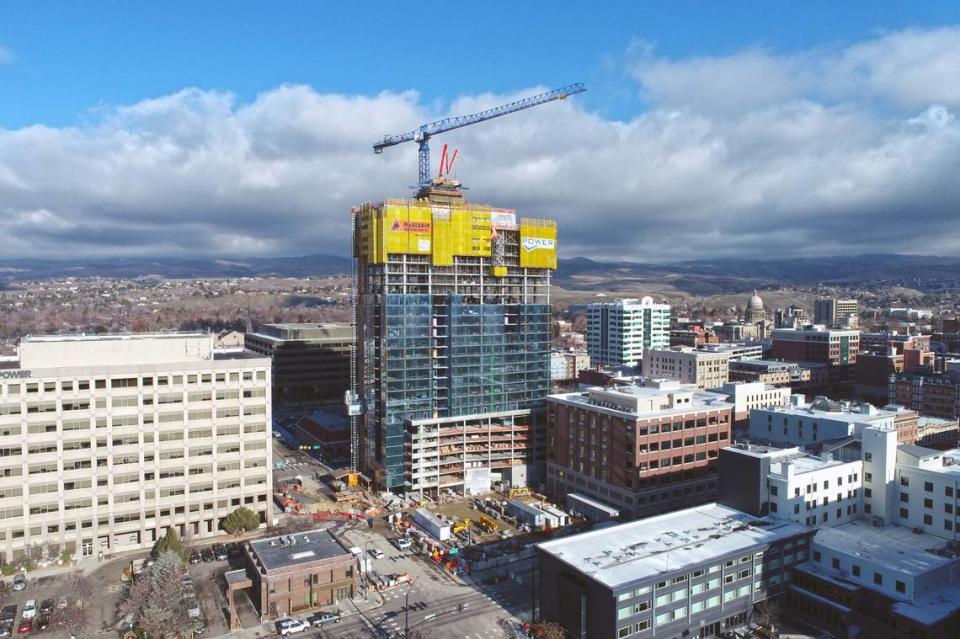
Fears over Idaho’s mega-projects
But the entire state’s construction labor force could be squeezed from the incoming mega-projects.
According to Wayne Hammon, CEO of the Idaho Associated General Contractors, $5 billion of the Micron semiconductor-fabrication plant project is directly related to construction, and the company is aiming to build it in four to five years.
“At its peak there are 4,000 construction workers on this one job alone,” Hammon said during a presentation to the Idaho Legislature’s 2024 Economic Outlook and Revenue Assessment Committee.
There will be so many workers at the site that Micron plans to add a cafeteria, because the company can’t have that many people leaving for lunch and jamming the roads every day, Hammon said.
One of the main contractors for Micron, Hammon said, promised that hundreds of workers finishing projects in Arizona, Nevada and elsewhere would move to Idaho to work on the project.
“Where do they live? How do they eat? What doctors do they see? Where do they shop?” Hammon said. “There are not enough RV parks in the Treasure Valley to house these people. There are not enough open apartments and homes to house these people.”
But even with an influx of out-of-state workers, developers are concerned about a labor market stretched thin.
Jeremy Malone, vice president of the Boise-based Oppenheimer Development Corp., which is developing the 26-story Arthur apartments in downtown Boise, said some of his main concerns will be finding a way to continue to attract tradespeople when the Meta and Micron projects will require so much specialized labor like electricians.

“Depending on who you ask, there’s roughly 2,000 licensed electricians in the state of Idaho,” said Joe Jackson, executive vice president of Engineered Structures Inc., or ESI. “Right now maybe 75% of them are in the Treasure Valley. Well, those mega projects by themselves really need over 1,200 of those licensed electricians at peak load.”
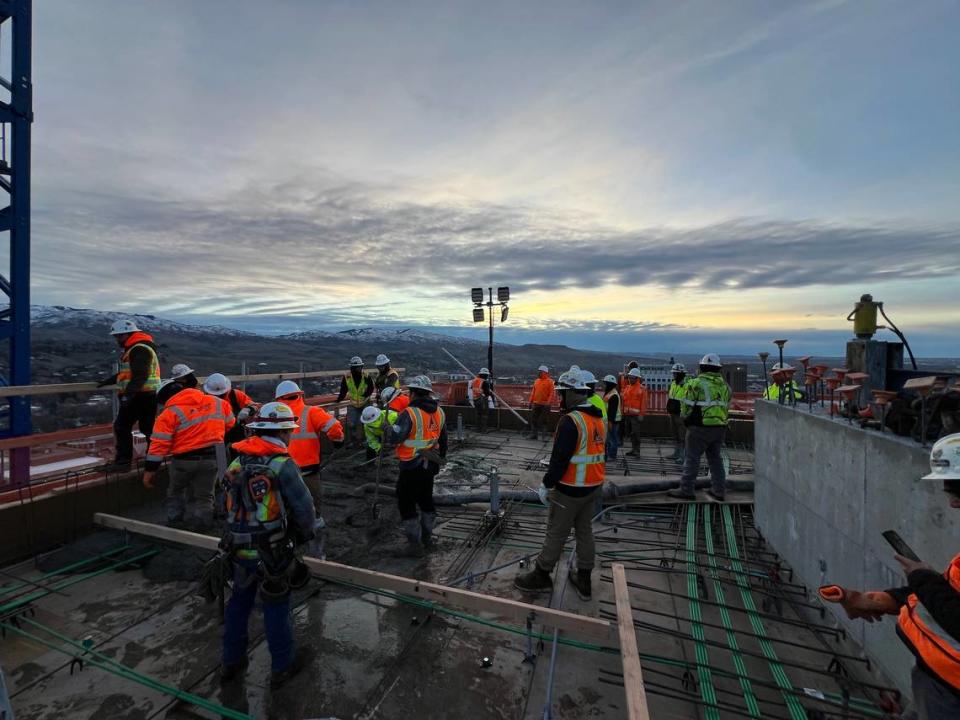
This stress applies to more than just electricians, Jackson said during a Feb. 13 Building Owners and Managers Association International, or BOMA, conference. Plumbers; pipefitters; carpenters; and heating, ventilation and air conditioning technicians could also be strained.
“It’s really going to shock the system,” Jackson said. “There’s going to be a fight for the labor. There’s going to be additional incentives offered.”
Micron is offering eye-watering incentives, according to Hammon. These include established wage floors whether workers are unionized or not, plus an extra $10 per hour for journeymen. Workers living over 150 miles from Boise will get an additional $240 per day to work on the Micron expansion, Hammon said.
Hammon didn’t have specifics on the pay, but he estimated that the wage floors will be from $30-$35 an hour to $70-$75 an hour depending on the trade. That could be 20% to 25% higher than average in Boise now, he said.
“It’s pretty good wages for construction,” Hammon said.
He doubts that workers would choose to work on an apartment project in Nampa when they could get much better pay working on the Micron expansion.
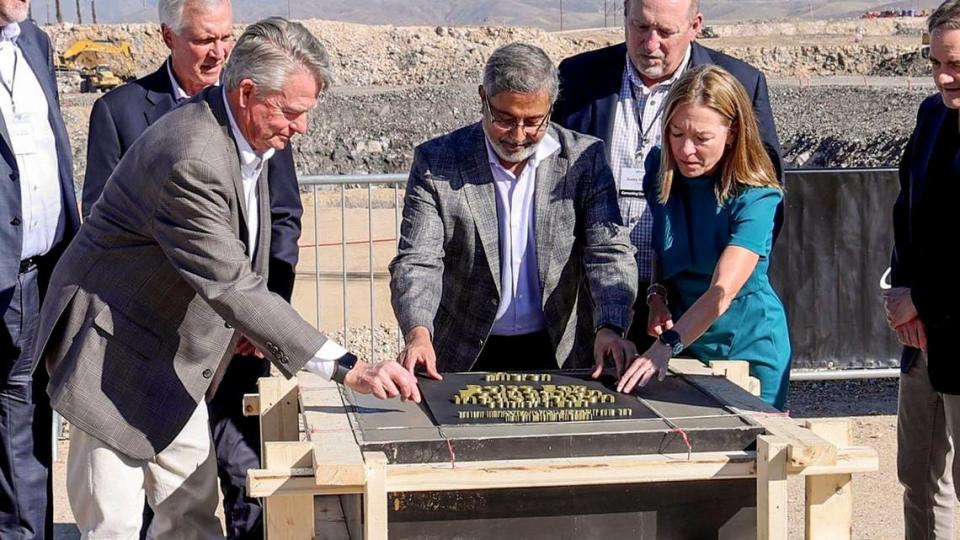
What about all those plans for downtown Boise?
These concerns could affect projects across the Treasure Valley, including some high-value projects in the pipeline for downtown Boise.
For instance, the multiblock redevelopment project south of Boise High School that would see the construction of a new downtown Boise YMCA, a seven-story apartment building and a 15-story apartment building with ground-floor businesses.
And after eight years, the College of Western Idaho hopes to redevelop the former Bob Rice Ford car dealership at 3150 W. Main St. into a 10-acre campus with apartments, stores and offices.
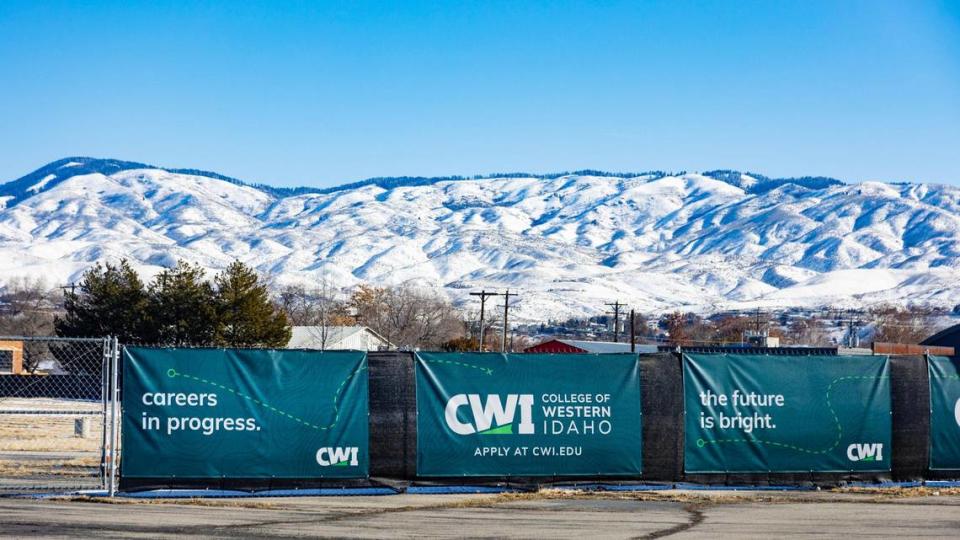
Developers are hoping both the YMCA and CWI project could finish construction in 2026, when Hammon said Micron could be hitting peak employment for the expansion.
“We’ve got a relatively robust development market out there right now … without these mega-projects that are on the horizon,” Jackson said. “Those mega-projects are really going to stress that manpower curve really to the max.”
With a boom in demand for workers, Jackson said, it doesn’t take a genius to see that wages would go up.
“There’s two or three projects out there … that are really going to stress the electricians, the plumbers, the carpenters, and really affect all of the development in our community,” he said.
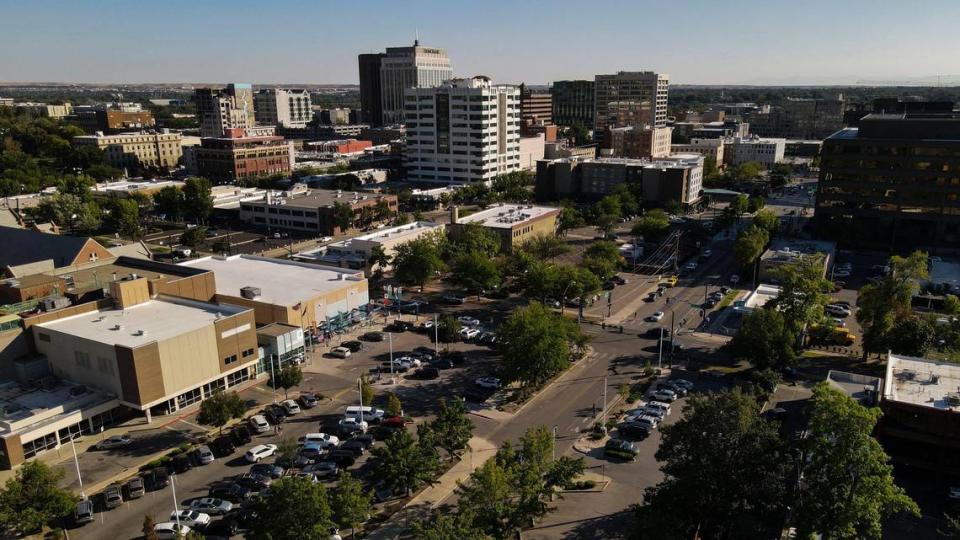
Construction sees labor, wage increases
Despite labor concerns, Idaho’s construction industry is growing.
“We’re almost double what the national average is (in construction labor growth),” said Hammon. “Since (the) 2020 recession, the low point, our employment in Idaho has increased over 27%.”
There were over 70,000 Idahoans working in construction in January 2024 — a 4.6% increase from the previous January, Hammon said. The number employed in construction has gone up every year since the pandemic.
Wages have surged 15% to 20% in the last year, with a 20% to 25% increase anticipated in 2024, Hammon said.
In Idaho, $6.5 billion was spent in construction in 2023, Hammon said, making up almost 6% of the state’s gross domestic product. Nationally, construction made up 4%.
Employment numbers, salaries and the percentage of GDP will all likely increase in the coming years, Hammon said. The main reason, according to Hammon, is the mega-projects.
The Idaho Sporting Goods store was a Boise icon. It’s now been demolished. This is why
See those big cranes? These are the 3 biggest buildings going up now in downtown Boise
ITD’s former HQ campus in Boise was to get new housing. Then the Legislature stepped in
‘Such a large development’: $1 billion Boise-area apartment, business hub set along I-84

